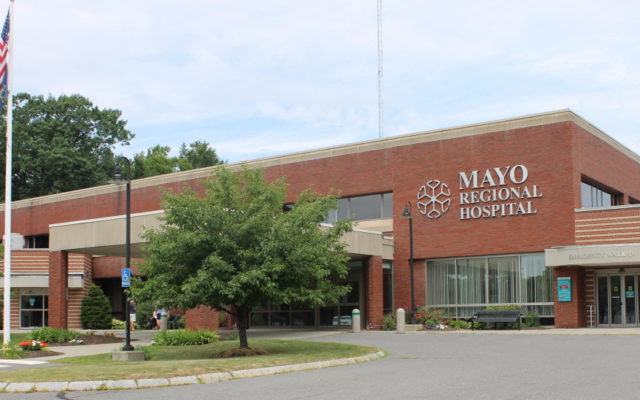
Northern Light saw revenue drop $100M as hospitals stopped services during pandemic
By Charles Eichacker, Bangor Daily News Staff
The parent organization of Northern Light Eastern Maine Medical Center in Bangor lost more than $100 million in patient revenue as the coronavirus pandemic forced it to cancel or delay many surgeries and other services last spring.
However, in a pair of reports released last week, two prominent credit rating agencies have mostly stood by their assessments that the organization is generally on track to pay back its existing bond debt but could struggle with unanticipated operating challenges.
Northern Light Health’s total patient revenue for the 2020 fiscal year was down $108 million from its 2019 levels after it put a halt to elective and nonessential services last March and only started resuming them on May 1, according to a report released last week by one of those agencies, Standard and Poor’s Global Ratings. The 2020 fiscal year for the hospital system ended Sept. 30.
In total, it took in $1.54 billion in patient revenue in 2020, which was down from its totals for each of the three previous years — between $1.58 billion and $1.64 billion — according to unaudited financial statements.
The nonprofit organization, which includes a total of 10 hospitals stretching from Portland to Presque Isle and is a major regional employer, ultimately finished the 2020 fiscal year in the red, with a $73.8 million operating loss. That’s even after the organization received $91 million in government relief funding, most of it from the federal CARES Act, and after patient revenue rebounded almost to normal levels by late in the summer. It ended the three previous years in the black, with net operating income ranging from $6 million to $32 million.
Northern Light’s year-end balances were slightly skewed by the addition of Northern Light Mayo Regional Hospital in Dover-Foxcroft, which merged with the Brewer-based organization early in 2020, but the biggest driver of the system’s operating loss was the pandemic, according to senior vice president and chief financial officer Tony Filer.
Last spring, federal health officials directed hospitals to put off all nonessential services so that they would have resources to handle a possible surge of the coronavirus, even though elective procedures account for a large chunk of their revenue. Hospitals also had to pay more for protective equipment such as face masks and other operating changes.
As a result, Northern Light recorded 84 percent of the emergency room visits, 89 percent of the inpatient admissions, 89 percent of the outpatient surgeries and 92 percent of the inpatient surgeries that it did in 2019, according to S&P.
“There were increased costs, but by far it was the drop in revenue,” Filer said. “Back in March basically when COVID hit, we stopped surgeries. Patients stopped coming to their doctors and stuff because they were scared of COVID.”
The two credit rating agencies, S&P and Moody’s Investors Service, have both reaffirmed their overall scores of the ability of Northern Light Health to pay back its long-term debt, but Moody’s has changed its outlook for the organization from “stable” to “negative,” based on the possibility that reduced cash flow could make it harder for the organization to meet its debt obligations.
To help cover its operating losses during the pandemic, Northern Light was able to borrow $181 million against its future Medicare payments, and it also took out a $150 million line of credit. It has not needed to draw from that line of credit so far, but Moody’s noted that the organization will have less financial breathing room once it repays the Medicare advance.
Moody’s has kept its rating of Ba1 for Northern Light, which means the group has substantial credit risks and is below investment grade. S&P has given Northern Light a BBB rating, which means that poor economic conditions and other changes could weaken its ability to pay back debts.
In general, organizations with lower credit ratings may end up paying more interest on long-term debt, such as the $45 million Northern Light Health borrowed this past year for consolidation of the two campuses of Northern Light Mercy Hospital in Portland. But Filer said Northern Light does not plan any additional borrowing for that project.
In a statement, Northern Light Health said it was “disappointed” in the change of the Moody’s outlook and that it has not violated any debt covenants. It said it was proud to not have not imposed any mandatory furloughs and was able to boost its hiring of providers during the pandemic.
“This proactive approach was the right thing to do,” the statement said. “As the second wave of COVID-19 is being felt across the nation, our system is prepared and responding in a thoughtful, coordinated, informed manner.”
Both Moody’s and S&P found that Northern Light Health generally seemed to be on stable financial ground before the pandemic, driven by its strong market share particularly in eastern and northern Maine. However, S&P noted that the Brewer-based organization is losing market share in the Portland area, where MaineHealth has a strong presence.
The disruption from the coronavirus pandemic came right as Northern Light was heading into the portion of the year — spring and summer — when more people come to Maine and pay for services in its hospitals and clinics, but it was able to blunt the impact in part through the use of telemedicine to see patients virtually and by recruitment of clinical workers over the last six months.
Nevertheless, the rating agencies found Northern Light will remain financially strained by the pandemic and by pre-existing challenges, such as further recruitment of new staff to largely rural areas.